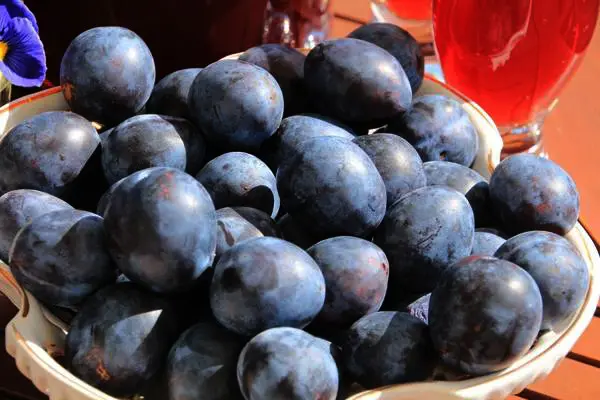Contents
Plum Bluebird was the result of the work of domestic breeders. The variety has become widespread in the south and in central Our Country. It is distinguished by high productivity, good presentation and taste of fruits, winter hardiness.
History of variety breeding
Plum Blue Bird obtained in VNIISPK – the oldest horticultural organization in Our Country. The Institute is engaged in the study of berry and fruit crops, as well as the breeding of new varieties adapted to the middle lane.
The variety was the result of cross-pollination of plums Kabardian early and Hungarian Caucasian. The work was carried out at an experimental breeding station in the Crimea.
The authors of the variety are S. N. Zabrodina and G. V. Eremin. After variety testing in 1997, the plum was included in the state register for the North Caucasus region.
Description of the plum variety Blue Bird
Plum Bluebird is a medium-sized tree. The crown is spreading, of moderate density. Branches brownish-brown, weakly articulated. The foliage is saturated green, the leaf plate is large, wrinkled, with a matte surface.
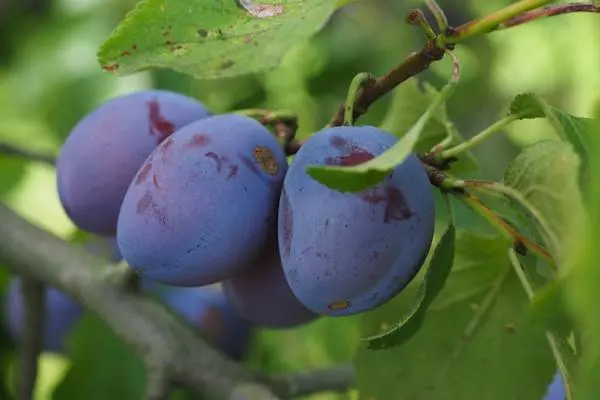
Fruit Description:
- wide oval shape;
- weight about 30 g;
- the same dimensions;
- Blue colour;
- pronounced wax coating;
- the pulp is dryish, green-yellow;
- the bone is easily separated from the pulp.
The pulp of the fruit has a sweet and sour taste. Tasting properties are estimated at 4,6 points. The fruits contain dry matter (15,6%), sugars (10,8%), acids (0,7%) and vitamin C (5%).
Best of all, the variety shows its properties when planted in the North Caucasus and the Lower Volga region. However, it is successfully grown in other areas of the middle lane.
Characteristics of a variety
When choosing a variety for planting, the plum tree’s resistance to drought and frost, fruiting and the need for pollinators are taken into account.
Drought resistance, frost resistance
Varieties Blue bird has an average resistance to drought. To obtain a high yield, the tree is watered according to the standard scheme.
Plum winter hardiness is high. With additional shelter, the plum bird endures even harsh winters.
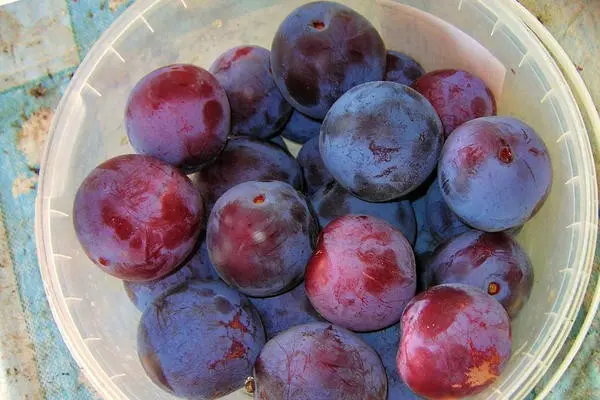
Plum pollinators
Cultivar Bluebird is partially self-fertile. The formation of ovaries occurs even in the absence of a pollinator. To increase productivity, it is recommended to plant next to varieties of plums that bloom at the same time: Smolinka, Yakhontovaya, Orlovskaya dream.
Plum blossom begins at the end of April. The fruits ripen from the second decade of August.
Yield and fruiting
Plum ripening occurs 5–6 years after planting. The variety gives a stable annual harvest. About 35 kg of plums are harvested from one tree. Due to the dense pulp, the fruits are stored for a long time and have high transportability.
Scope of berries
Variety of universal application. The fruits are used fresh and for the preparation of sauces, compotes, jams, marshmallows, dried fruits.
Disease and pest resistance
Plum is resistant to moniliosis, polystigmosis, clasterosporiasis. Preventive treatments help reduce the risk of developing diseases and the appearance of pests.
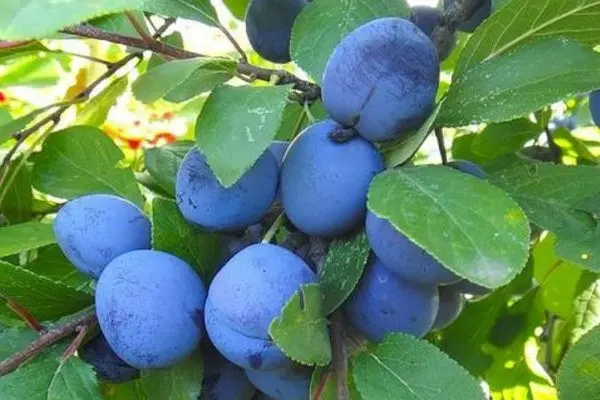
Advantages and disadvantages of the variety
Advantages of the Blue Bird variety:
- excellent taste;
- widespread use of fruits;
- disease resistance;
- high winter hardiness.
The main disadvantage of the plum is a spreading crown. The tree of this variety grows quickly and requires regular pruning.
Features of landing
The further growth of the plum and its yield depend on the implementation of the planting rules. It is necessary to choose the right place for growing crops and prepare the soil.
Recommended dates
Planting dates for the Blue Bird variety depend on the climate of the region. In the south, work is carried out in the fall, after leaf fall. The seedling has time to take root before the cold snap.
In cool climates, planting is done in early spring when the soil warms up. You need to complete the work before the leaves appear on the trees.
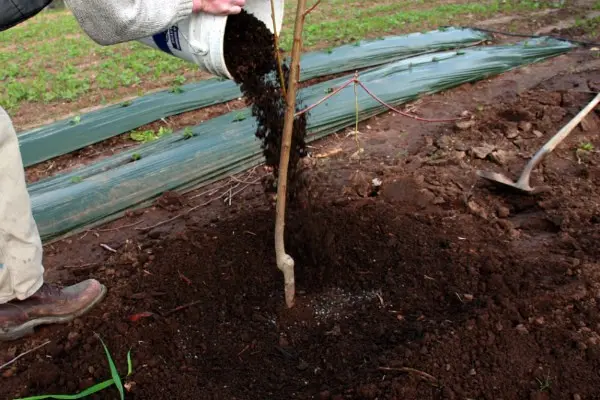
Choosing the right place
Plum prefers well-lit areas located on the south or west side. The culture does not respond well to stagnant moisture in the soil, so it is not planted in the lowlands. Groundwater should be located at a depth of 1,5 m or more.
Plum grows on all soils, except for acidic ones. If the soil is acidified, dolomite flour or wood ash (600 g per 1 sq. M) is added before planting.
What crops can and cannot be planted nearby
The plum is removed at a distance of 5 m or more from the following crops:
- hazel;
- birch, poplar;
- fir;
- pear, cherry.
Plum loves the neighborhood of apple and elderberry. It is best to plant different varieties of plums or cherry plums nearby.
Selection and preparation of planting material
Plum seedlings Blue Bird are purchased from nurseries or other centers. High-quality planting material has no damage, traces of pests and other defects.
Before starting work, evaluate the root system of the plum. If the roots are overdried, then they are kept for 3 hours in clean water.
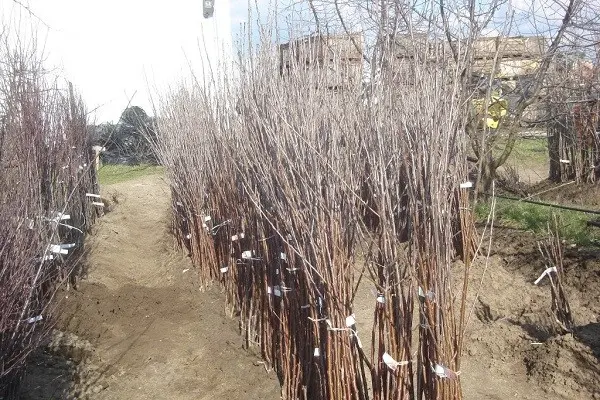
Landing algorithm
A landing pit for a plum is prepared in 2 or 3 weeks. During this time, the soil will shrink. If planting is planned for the spring, then it is better to dig a hole in the fall.
The procedure for planting a plum Blue bird:
- At the selected site, they dig a hole with a diameter of 70 cm to a depth of 60 cm.
- Fertile soil, compost and peat are mixed in equal proportions.
- Part of the prepared land is laid in a hole.
- After shrinkage, the remaining earth is poured, a seedling is placed on top.
- The roots of the plant are straightened and covered with soil.
- The plum is abundantly moistened. The trunk circle is fertilized with peat.
Plum Aftercare
The fruiting of the Bluebird plum largely depends on further care.
- In drought, the tree is watered with settled water. Watering is important during flowering and fruit ripening. On average, the soil under the drain is moistened 3-5 times a season. Up to 6 liters of water is poured under a young tree, up to 10 liters under an adult plum.
- During the season, plums are fed 3 times: before flowering, when the first fruits ripen, and after harvesting. To feed plums, 30 g of urea, potassium salts and superphosphate are required. The components are dissolved in water, after which the tree is watered under the root. For the second and third feeding of plums, a similar fertilizer is prepared, but urea is excluded.
 Advice! It is convenient to combine watering the Blue Bird variety with top dressing.
Advice! It is convenient to combine watering the Blue Bird variety with top dressing. - By pruning, you can form the crown of the tree. Plums are cut in spring, before sap flow, or in autumn, after leaf fall. Eliminate dried, broken and frozen shoots. The plum crown is formed in several tiers, the skeletal branches are shortened to 60 cm.
- Variety Blue bird has good frost resistance. Shelter is necessary only for young plums. They are covered with agrofiber or burlap, and spruce branches are placed on top. For additional protection in winter, they throw a snowdrift.
- In order for an adult tree to better endure the winter, its trunk is spudded and a layer of humus 10 cm thick is poured into the near-stem circle.
- To protect against rodents, a roofing material or mesh is attached to the plum trunk.
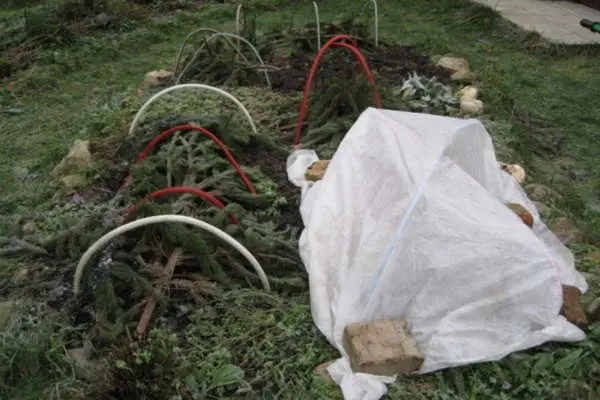
Diseases and pests, methods of control and prevention
The table shows possible plum diseases and ways to deal with them.
Disease | Symptoms | Fight | Prevention |
Comedy | Wounds appear on the bark, from which resin flows. Affected shoots dry out and die. | Cleaning and disinfection of damage to the drain with copper chloride. | 1. Avoid mechanical damage to the trunk and shoots. 2. Cleaning the plum trunk from dead bark, mold and lichen. 3. Elimination of fallen leaves. 4. Regular plum care. |
Rust | Convex red spots appear on the leaves, which increase with time. | Removal of affected foliage. Spraying plums with Bordeaux liquid. |
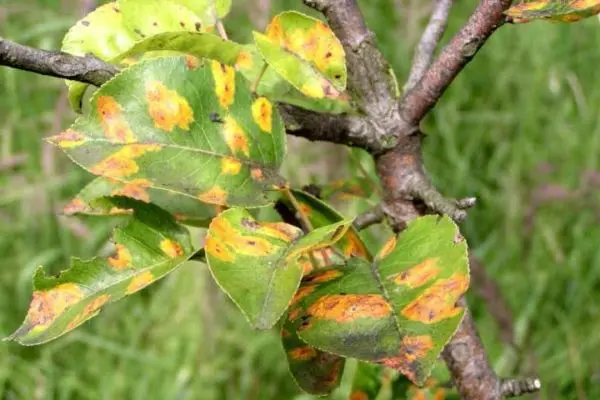
The main crop pests and control measures are listed in the table.
vermin | Evidence | Fight | Prevention |
Plodojorka | Caterpillars eat away the fruits, leaving passages behind them. | Elimination of affected fruits. Plum processing with Karbofos. | 1. Loosening in the trunk circle. 2. Loosening the soil under the drain. 3. Cleaning up fallen fruits and leaves. 4. Preventive treatment of trees with the preparation “Nitrofen”. |
Plum aphid | Aphid colonies live on the underside of leaves. As a result, the leaves curl and dry. | Plum processing with “Benzophosphate”. |
Conclusion
Plum Blue Bird is a worthy variety for growing in Our Country. It is valued for winter hardiness, self-fertility and stable fruiting. The fruits have a universal use and a sweet taste. Plum is suitable for cultivation in household plots and on an industrial scale.
